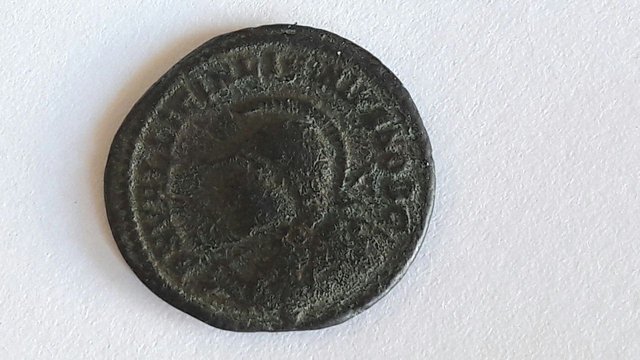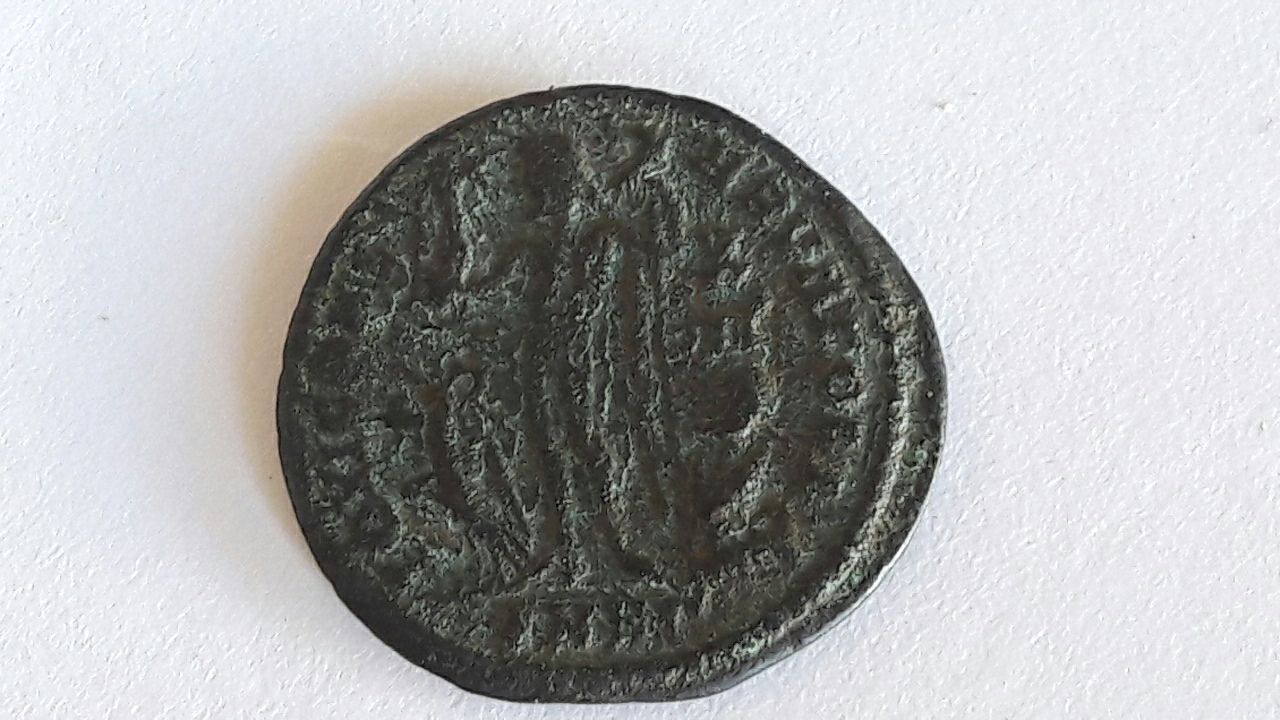Roman currency of Valerius Licinianus Licinius, Licinius II moneda romana de Valerius Licinianus Licinius, Licinius II
Today I will present another coin of my collection Valerius Licinianus Licinius, Licinius II
Hoy le presentare otra moneda de mi coleccion Valerius Licinianus Licinius, Licinius II
Licinius II AE Follis. 321-324 AD. DN VAL LICIN LICINIVS NOB C, helmeted and cuirassed bust left, holding spear and shield / IOVI CONS-ERVATORI, Jupiter standing left, chlamys across left shoulder, holding Victory on globe and leaning on sceptre, eagle with wreath left, captive right; X over II Mu in right field. Mintmark SMNB
Licinius II AE Follis. 321-324 AD. DN VAL LICIN LICINIVS NOB C, busto con casco y corazas a la izquierda, sosteniendo la lanza y el escudo / IOVI CONS-ERVATORI, Júpiter de pie a la izquierda, chlamys a través del hombro izquierdo, sosteniendo Victoria en globo y apoyado en cetro, águila con corona izquierda, X sobre II Mu en el campo derecho. Mintmark SMNB
According to wikipedia we can know of Licinius II or Licinius the Younger (full name: Valerius Licinianus Licinius) (approx. 315–326) was the son of Roman emperor Licinius. He nominally served as Caesar in the eastern empire from 317 to 324 AD while his father was Augustus. His mother was Licinius' wife Flavia Julia Constantia, who was also the half-sister of Constantine I.
After his defeat by Constantine at the Battle of Chrysopolis, Licinius the elder was initially spared and placed in captivity at Thessalonica. However, within a year Constantine seems to have regretted his leniency and the former Emperor was hanged.
The younger Licinius, who was Constantine's nephew, also fell victim to the emperor's suspicions and was killed, probably in the context of the execution of Crispus in 326.
Other reports relate that Licinius the younger was forced into slavery in the imperial textile factories in Africa, where he is noted in 336. However, the imperial rescript of 336 makes it clear that the "son of Licinianus" referred to was not Licinius II as it directs that he be reduced to the slave status of his birth. No son of Constantine's sister would have been referred to in this manner.
Segun wikipedia podemos saber de Licinio II o Licinio el Joven, de nombre completo Valerius Licinianus Licinius (aprox. 315–326), fue un hijo del emperador romano Licinio. Fue César nominal del imperio oriental entre 317 y 324, mientras que su padre ostentaba el título de Augusto. Su madre era la esposa de Licinioː Flavia Julia Constancia, que era también medio-hermana de Constantino I.
Después de su derrota por Constantino en la batalla de Crisópolis, Licinio el viejo fue puesto bajo cautiverio en Tesalónica. Al cabo de un año, no obstante, en 325, Constantino ordenó la ejecución de Licinio.
Licinio el joven, pese a ser sobrino de Constantino, también cayó víctima de las sospechas del emperador y fue asesinado, probablemente en el contexto de la ejecución de Crispo en 326.
Otros informes indican, sin embargo, que Licinio el joven fue forzado a la esclavitud en las fábricas textiles imperiales de África, donde se le sitúa en 336. No obstante, el decreto imperial de 336 en que se basa esta teoría indica que el «hijo de Licinianus» al que se refiere fue devuelto a su condición natal de esclavo, lo que es totalmente incompatible con la condición de un hijo de la hermana de Constantino


Hey, nice post! Glad to meet you! So cool, we are worldwide!!! NICE.
Please follow me back, I have some amazing photography posts planned.
: ) @pavelkanks
thenk you ok